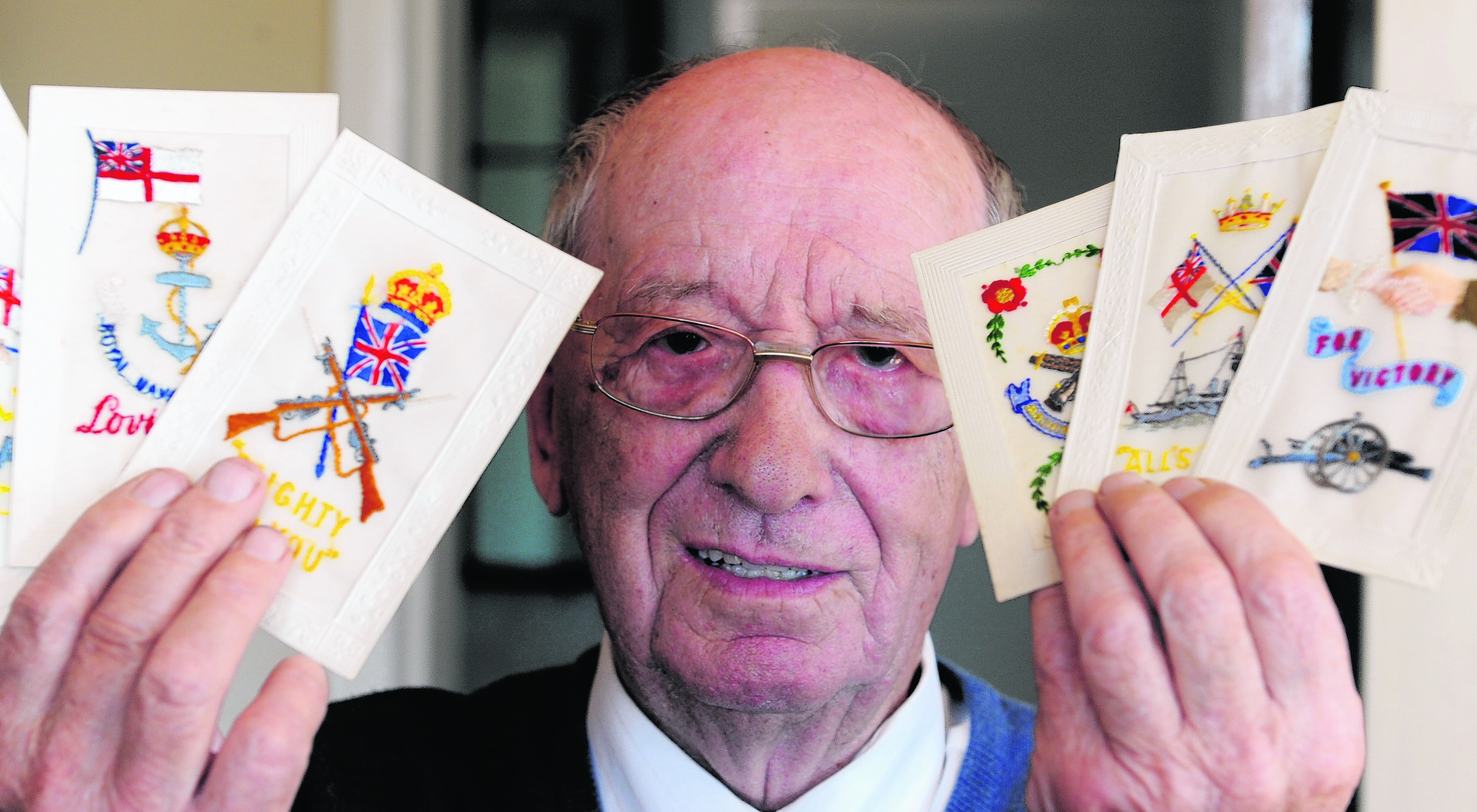A selection of ornate embroidered greetings cards dating back to World War I have been rediscovered by an Aberdeen man.
A total of seven postcards, designed with messages of good will and love from the frontline back to the home front, belong to Eric Banks, of Balfron Place.
He rediscovered the cards at his home recently, having forgotten he had them as they were handed down to him years ago.
“My grandmother had a corner shop on Jamaica Street and when she was retiring she tidied up and found these cards in a box. She handed them on to her daughter, who then handed them down to me,” he said.
The designs on the front of many of the cards portray positive and reassuring messages of the British military forces’ efforts in the war. “For Victory”, one proclaims underneath the image of a man’s hand reaching out for a woman’s; “To my old pal”, reads another beneath a horseshoe, Union flag and French flag; “All’s Well” states one below a Naval warship, and “Blighty and You” says another with bayonet-mounted rifles crossed proudly above.
After finding the cards recently, Mr Martin, 85, who was a self-employed painter and decorator, began to wonder what role the cards would have played at the time of World War I – his interest especially piqued as the centenary is now fast approaching.
“I thought they were awful bonny, but I was surprised to see they were made in France. I would have thought they were too busy with the war to make these,” he said.
Curator of The Gordon Highlanders Museum, Jesper Ericsson, was able to shed light on the ornate greetings cards. He explained that, while they are not rare artefacts, they offer a wonderful glimpse into the past.
Cards of this type, he said, were created abroad and on the home front.
“These were sold to Allied troops in France and Flanders for soldiers to send home – as you can imagine, a great item for a husband to send home to a wife or a young lad sending something home to his mum,” he said.
“And sometimes men recuperating from wounds made them, using needlework as a way to pass the time, although the needlework examples we have in the collection made by Gordon Highlanders recuperating from wounds are usually much larger.”
Their value as historical artefacts is undeniable, but more important is their enduring emotional value.
“I think what we have discovered here at the museum is that people are fascinated by these cards. It’s not just as artefacts, but the fine needlework that people resonate with,” Jesper continued.
“You can imagine that soldiers in France or Belgium would think ‘that’s perfect for mum or Auntie Flo, I’ll buy one and they’ll be really gratefully received’. That’s why they have survived, because of that emotional and creative aspect – there’s something more to them, and that’s why they might not have been thrown out.”
